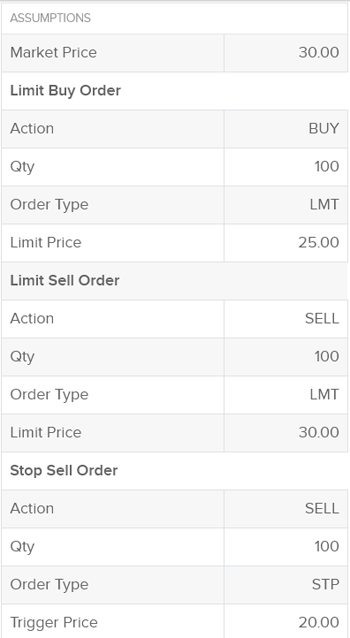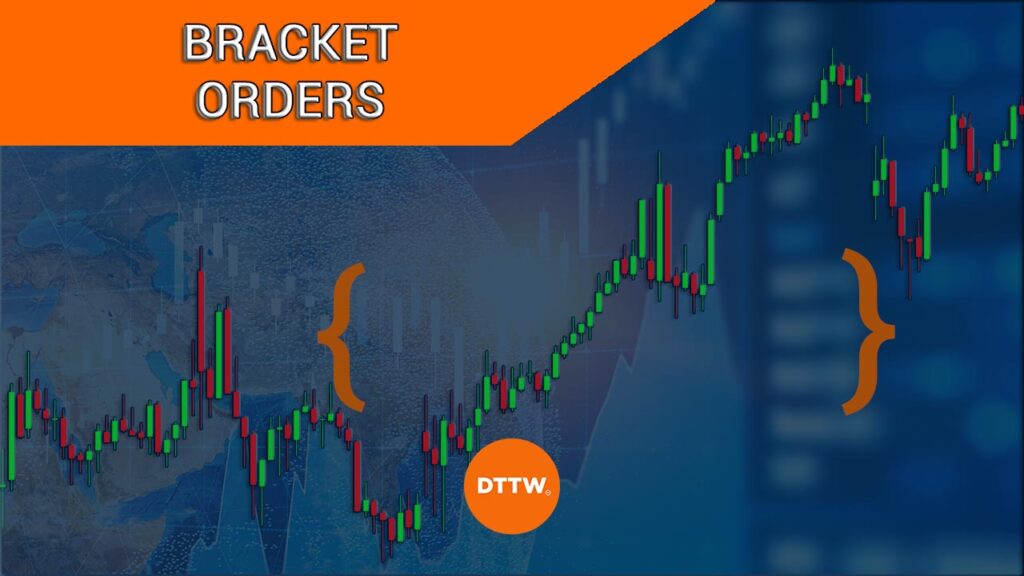Risk management is an essential part of trading the financial market because it minimises risks while boosting returns at the same time. Fortunately, as we have written before, there are several approaches to managing your risk in the financial market.
One of it is placing limit orders, which include buy and sell stop and buy and sell limit orders. These orders eliminate the risks that come with market orders like slippage and gaps.
In this report, we will look at bracket orders, which are also essential techniques of limiting risks in the market.
Related » All the Trading Orders You Need to Rule the Markets!
Table of Contents
What is a bracket order?
A bracket order is an order type that combines a market order and limit orders. The goal is to make maximum returns and limiting risks at the same time. To understand how it works, you need to understand the various types of orders in the market.
- Market order – This is an order that is executed right away. For example, if a stock is trading at $20, a market order will execute it at that price and at the same time.
- Buy limit order – This is an order to buy an asset at a price or below the market price. A sell limit is an order to sell an asset at a price that is above the market price.
- Stop loss order – This is also known as a stop order and is an order to buy an asset once the price reaches a certain level. In this case, the stop price will become a market price.
- Buy stop – This is an order type that is entered at a stop price that is above the present price.
Therefore, a bracket order combines these orders to maximise profits and reduce risks. Some brokers provide the bracket order types as an option when opening a trade automatically. For others, you need to set the orders manually.
› Stop Order vs Stop Limit Order
Bracket vs cover order
A common question is on the difference between a bracket order and a cover order. A bracket order can be summarized as a situation where an initial order is followed by a stop-loss order and a target order.
On the other hand, a cover order is where a compulsory stop-loss order accompanies an initial order. In this case, a trader places a buy or sell order, which can be a limit or a buy/sell order.
They then place a compulsory stop-loss order that cannot be canceled. The cover order can be summarized as an initial order + stop-loss order.
Bracketed buy and sell order
Another common question is on the difference between a bracketed buy and sell order. A bracketed buy order refers to a buy trade that has a sell limit and a sell-stop order attached to it. As a result, traders are able to lock in profits when there is an upside while preventing downside loss.
A bracketed sell order is one where a trader goes short an asset and then bracket it with a buy order and a buy limit order.
Example of a bracket order
Let us look at a good example of a bracket order. Assume that the stock price of a company is trading at $20. In this case, you can place a market order at $20 and put a take profit at $25 and a stop loss at $15.
Alternatively, in case of a bracket order, you can place a buy limit order at $17 and a sell stop at $14. Also, you can place a profit limit order at $24. In this case, if the stock moves to $17, the buy limit order will be initiated, becoming a market order.
What happen if the stock continues to fall?
It will be stopped at $14 by the sell stop. On the other hand, if the price falls to $17 and then bounces back, the buy order will be placed. This order will continue rising until $24, when it will be stopped by the profit order.
The alternative is also possible!
If the stock is trading at $20, you can place a sell limit order at $24 and a sell stop at $26. You can also place a profit limit order at $17. In this case, you will make a profit if the price rises and then moves lower.
The screenshot below shows an example of a bracket order.

Use technical analysis
Technical analysis is an essential aspect when you are looking at bracket and other order types. This is because it will help you identify the key areas to place the trade, including the support and resistance levels.
Technical analysis is the process of analyzing a chart with the goal of predicting the next price action. In most cases, it refers to a combination of using technical indicators like moving averages and the Relative Strength Index (RSI) and other chart analysis strategies.
Chart analysis can involve identifying chart patterns like triangles and head and shoulders and candlestick patterns like doji and hammer.
Benefits of bracket orders
Bracket orders have several benefits, including:
- Risk management – A bracket order is an excellent method of limiting your losses in the market.
- Simple to use – While bracket orders may seem to be complicated, in reality, they are not especially for advanced traders.
- Trading when not present – Bracket orders are an excellent way to trade when you are not present. You can simply enter the trade set-ups and then watch it flow.
- Trading discipline – Most people are usually not disciplined when trading. A bracket order can help you deal with that.
Can bracket orders be canceled?
Bracket order are a form of risk management that many sophisticated traders use in the market. As mentioned above, some trading platforms come with pre-built bracket order tools.
In most cases, you just need to enter the bracket order yourself. Therefore, normally, it is possible to cancel the order before it is implemented.
When not to use bracket orders
Like all order types, there are times when it is not appropriate to use bracket orders. For example, it is not recommended to use them in periods of high market volatility. Doing this will expose you to substantial risks in the market.
Also, you should not use a bracket order immediately after a company goes public. In this case, you don’t have a lot of historical data to base your trade upon.
Further, you should avoid using the approach when there is low volume in the market and when an asset is ranging.
Final thoughts
Bracket orders may seem to be complicated. However, when you take time to learn more about them, the process becomes relatively easy. If you are new to them, we recommend that you spend a considerable amount of time learning and applying them in a demo account.
External Useful Resources
- 3 Advantages of Bracket Orders – Schwab





